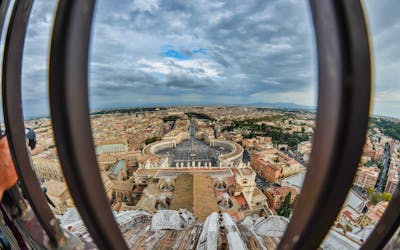Timing is everything if you want to have the best experience exploring the ancient wonders of the Acropolis. It's the difference between being surrounded by a crowd or enjoying a quiet, peaceful atmosphere. Seeing the Parthenon just as the sun is starting to rise and the first rays of light hit the majestic columns isn’t the same as visiting the Acropolis at noon
Let’s take a closer look at the best times to visit Acropolis so you can make your trip truly unforgettable.
Acropolis opening hours
The Acropolis is open everyday but the timings vary according to the season you’re visiting Athens! It’s divided into 3 periods: Jan 1 - March 31, April 1 - Oct 31, Nov 1 - Dec 31
- From Jan 1 - March 31:
Wednesday to Monday: 8:30am - 3:30pm
Tuesday: 1pm - 8pm
- From April 1 - Oct 31:
Wednesday to Monday: 8am - 8am
Tuesday: 1pm - 8pm
- From Nov 1 - Dec 31:
Monday: 8:30am - 5pm
Tuesday: 1pm - 8pm
Wednesday to Sunday: 8:30am - 3:30pm

Best time of the year to visit Acropolis
The Spring season between March to May is a great time to visit the Acropolis! With the weather being pleasant, you can avoid the scorching heat and enjoy exploring the Acropolis without worrying about getting sun-burnt. The other off-season you can consider is Autumn season between September to October, with lesser crowds around!
Best time of the day to visit Acropolis
Since the Acropolis opens early by 8-ish, my best bet to visit the landmark would be early in the morning! Since it’s open almost the entire day, visitors may opt to go as per their own sweet time. And that’s the catch. It becomes crowded. So if you want to avoid all the rushing and explore the Acropolis in peace, head out in the morning hours and don’t wait till noon!
If you want to witness the Acropolis in the evening during golden hour, that’s a good time to visit too! The hues of the sunlight casting on the Acropolis is truly stunning. If you’re all for the aesthetics, I suggest visiting the Acropolis in the evening!
What to expect on your visit to the Acropolis?

Roam the storied cobblestones where citizens of Pompeii once lived. Pompeii presents an unparalleled window into the past. You'll step over stone slabs worn smooth by chariot wheels and explore homes and shops edged with millennia-old frescoes, transporting you back to a thriving city before its tragic end.

Pompeii gives you a great perspective for understanding daily Roman life. From the amphitheater to thermal baths, temples to bakeries, each corner offers insights into the civilization's engineering prowess and societal norms. Marvel at intricate mosaics and haunting plaster casts of eruption victims, which capture the final moments of the city's inhabitants.

Unveil the sophistication of Pompeiian art in its frescoes and sculptures. Each artifact reflects a rich tapestry of stories, myths, and the daily life of the Romans. From the detailed portraiture in the Villa of the Mysteries to the vivid colors found in the House of the Faun, these artistic legacies provide an intimate glimpse into an era of profound creativity.
Recommended tickets for Acropolis
Tips for visiting the Acropolis
- Pay attention to the opening hours, so that you can head there as soon as possible in the morning. This way, you can avoid the large crowds lining up later.
- Buy tickets in advance. As I pointed out earlier, large crowds mean longer queues to get tickets! So save yourself some time by buying tickets beforehand.
- Explore the main attractions first - Parthenon, Temple of Athena Nike, Erechtheion, The Odeon of Herodes Atticus and Acropolis Museum. Then you can explore the other things down the hill from the Acropolis!
- Wear comfortable clothes and footwear. Avoid flip-flops or sandals because the terrain is rugged.
- Opt for a guided tour if you want a thorough learning experience of the Acropolis.


